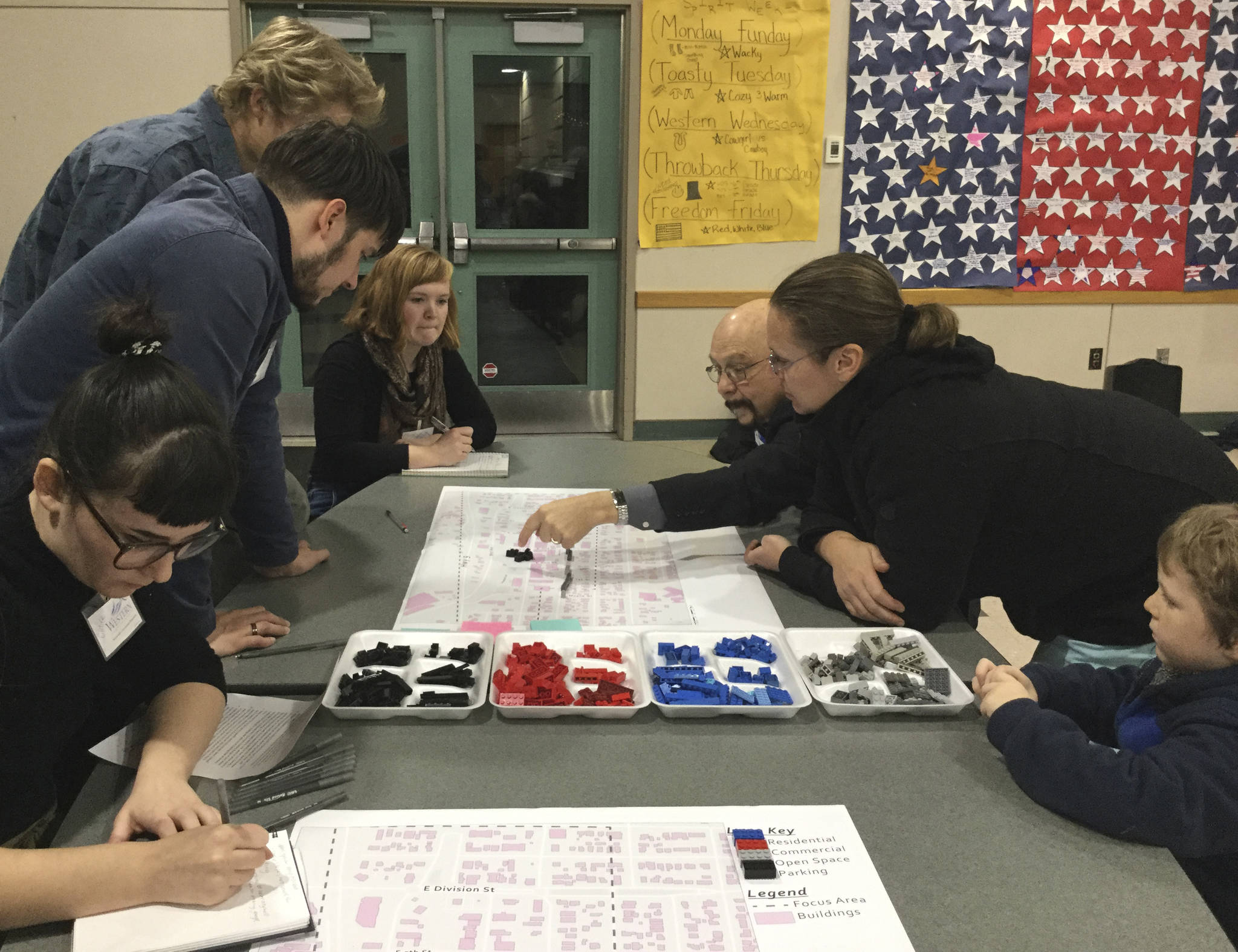ARLINGTON – Anne Wendt grew up in Mukilteo and moved to the Arlington area because she wanted acreage, animals and the little Trafton School for her children to attend before the school district sold it. She loves Arlington’s small-town activities, from Hometown Holidays, parades and horse-drawn carriage rides to music and art in Legion Park.
“It’s exactly like you think that a small down would do,” Wendt said.
As Arlington grows, city leaders don’t want to lose that image.
Residents and city leaders got their first try at shaping a downtown corridor plan that will preserve the district’s already abundant charm while preparing for future growth that won’t diminish its character.
The city on Thursday held its first in a series of community workshops guided by college students and urban planning teacher in Western Washington University’s Sustainable Communities Partnership.
The process over the next year will be “about what we could envision Arlington’s charming downtown to be, the charming downtown of the future,” said Mayor Barb Tolbert, speaking to about 65 people who attended the workshop at Haller Middle School.
Sarah Lopez, city community revitalization project manager, said the city has worked over the past several years on efforts to revitalize downtown and give visitors more reasons to spend time there.
Nicholas Zaferatos, professor of Urban Planning at WWU’s Huxley College of the Environment, said The student teams wanted to hear “what you would like to see in the downtown, and what you certainly don’t want to see,” Zaferatos said.
Participants had plenty of ideas about downtown appearance and amenities, connectedness with Centennial Trail and access from nearby neighborhoods, job growth and how to better blend business and residential uses.
Residents were polled about their preferences for bench seating styles, signage and wayfinding signage, sidewalk width, landscaping, parking, building frontage appearance and other other visual features.
Tolbert said a concern of hers is if someone buys an old building downtown, then decides to tear it down because it’s not possible to remodel, how do you make sure that what goes back in fits with what the city envisions as the downtown’s character.
Participants rotated among six tables staffed by students ready with maps, charts, surveys, push pins and sticky dots.
Here are some of the comments that emerged:
* More city landscaping desired, ranging from rain gardens to green space buffers.
* Mixed-use downtown with shops at street level and housing above is desirable.
* Parking downtown is an issue, and could become worse until more and better use of space.
* Find better ways to create connectivity between Centennial Trail and nearby businesses; for example, with outdoor restaurant or beverage seating on or within site of the trail.
* Centennial Trail could use more lighting to address safety concerns at night for both bicyclists and drivers.
* A movie theater.
For all the preferences generated at the meeting, there were also lots of positives to share about downtown also.
Among their favorite spots, participants cited Legion Park, Arlington Hardware & Lumber, Bistro San Martin, Moe’s Espresso, Rocket Alley bowling, and other coffee shops and bars.
Zaferatos said of the hardware store, “You are so unique as a community that you’ve got that. Those are some of the first businesses to go out of communities when the big boxes come in, and it’s such a gathering space.”
He said the students will schedule another workshop in winter, sketch out ideas of concepts to make sure that they’re moving in the right direction, and present a report in spring based on what they heard from the community.
Lopez said the results will enable the city to start budgeting to roll out the downtown plan, seek grant opportunities, and identify projects that key stakeholders such as the council, Downtown Arlington Business Association and others invested in downtown can support.
College students have had a hand in planning Arlington’s downtown before.
University of Washington students a decade ago developed guidelines for Olympic Avenue that helped define the character of a downtown that now is thriving.



